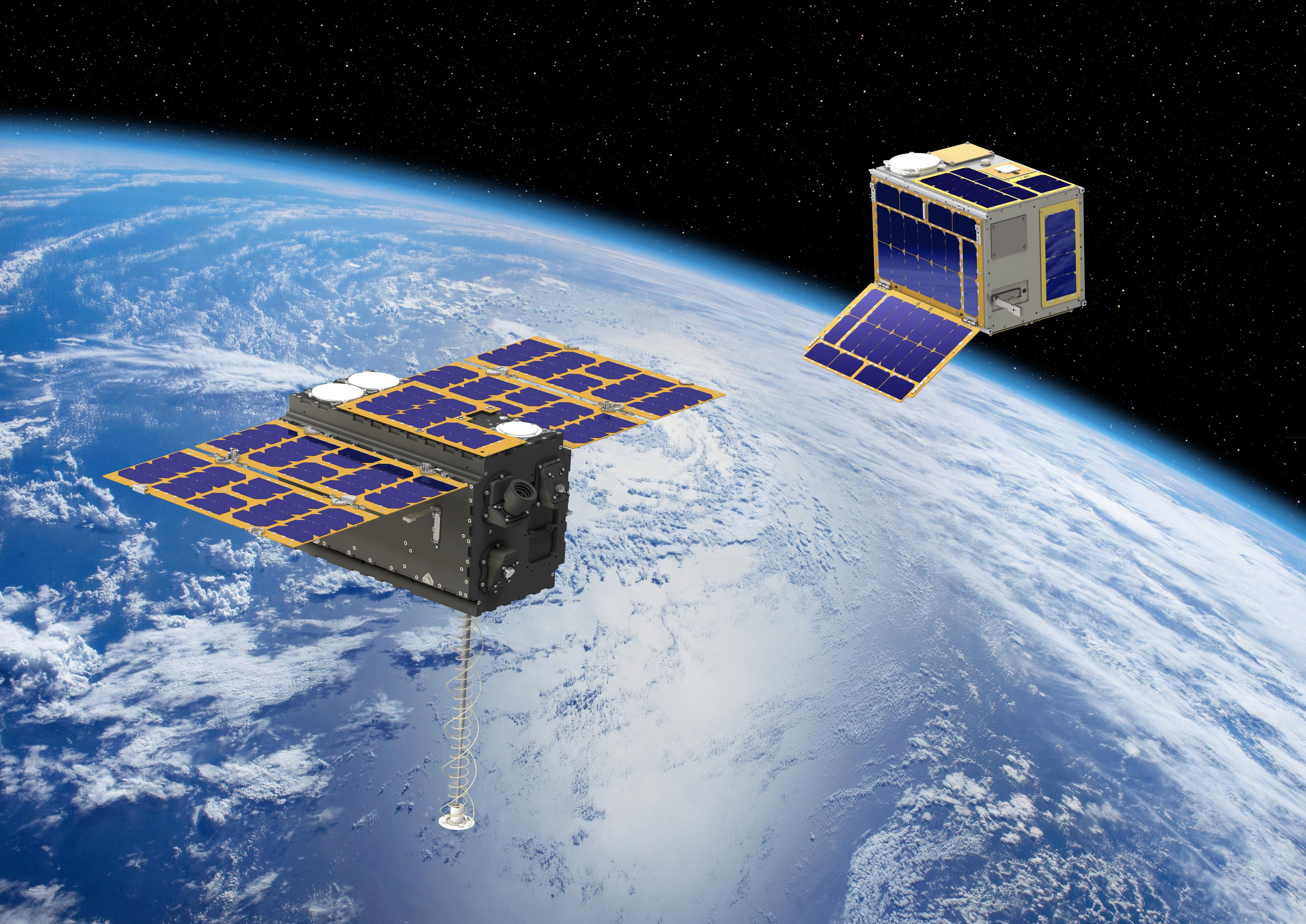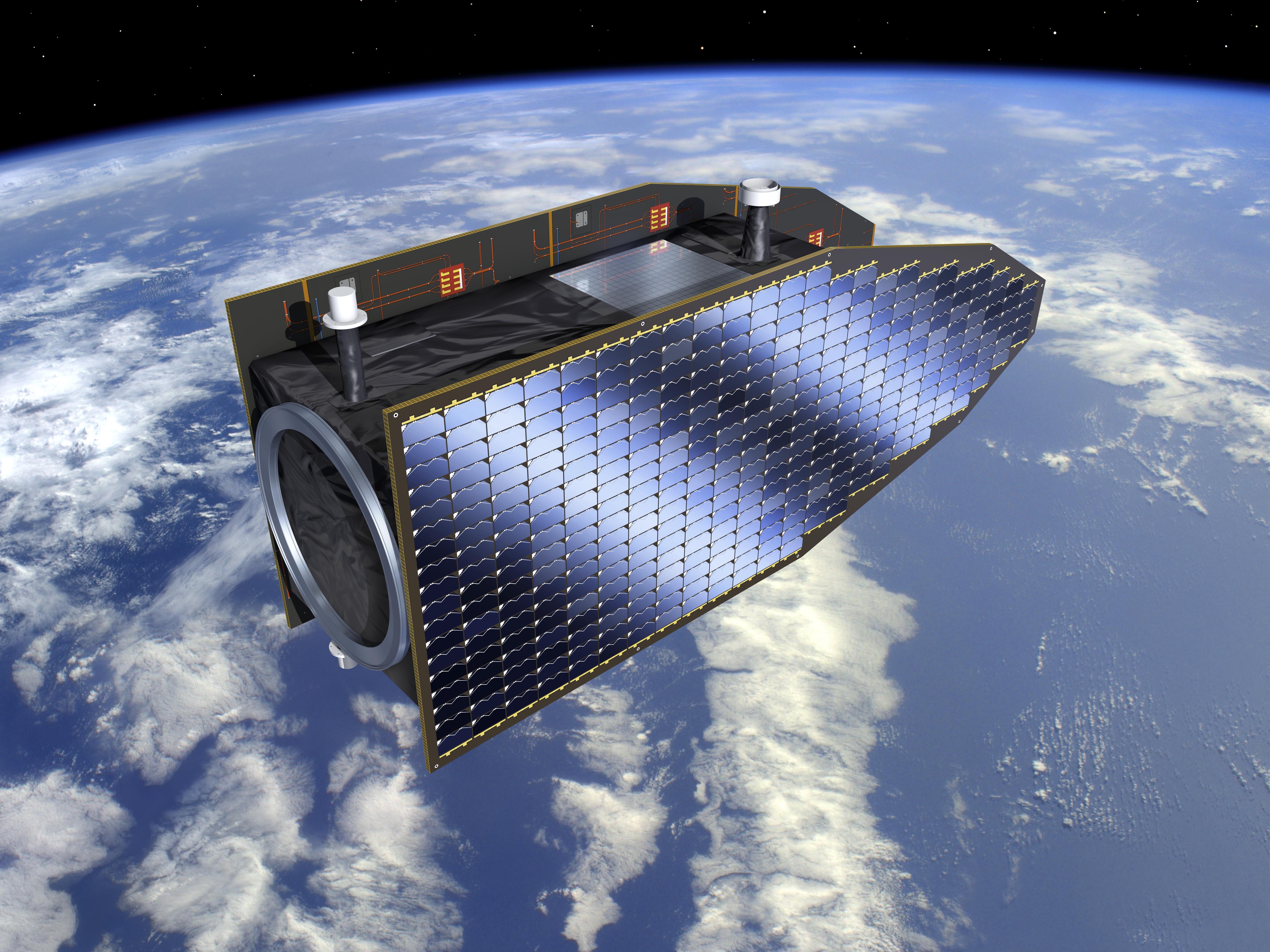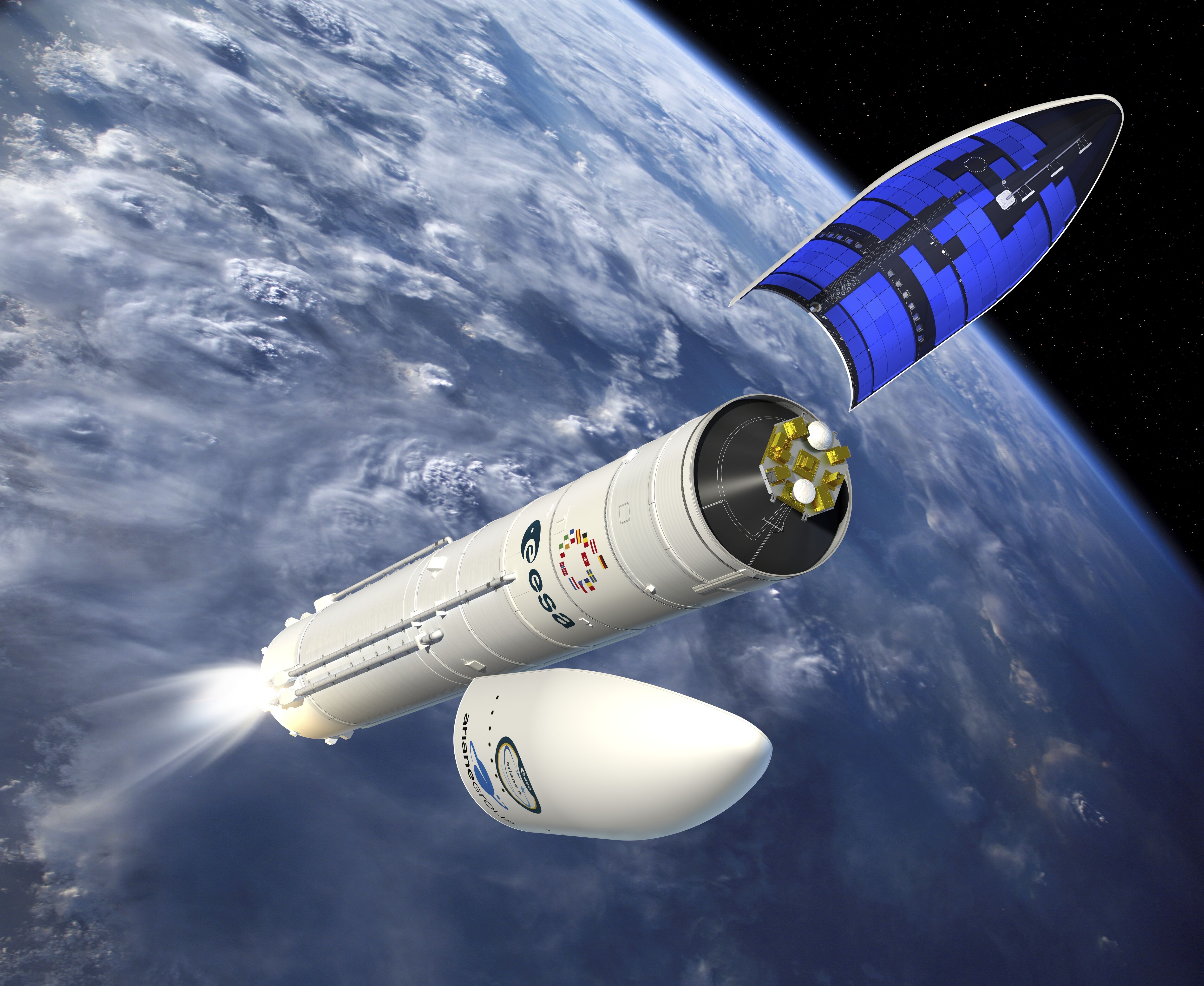
HERAArtist's Impressions - Various
Hera and its CubeSats at Didymos system
Please sign in to download.
ESA’s Hera mission seen with its CubeSats in orbit around its target asteroid. Following NASA’s Double Asteroid Redirection Test, DART, which impacted the Dimorphos moonlet in 2022 to change its orbit around its parent asteroid Didymos, ESA’s Hera will be Earth’s next planetary defence mission, scheduled to launch in October 2024. The DART impact was successful, based on astronomical observations multiple unknowns, such as the precise mass of Dimorphos, its makeup and its internal structure – as well as the size and shape of the crater left by DART. So when Hera reaches the binary asteroid system in late 2026, it will commence its own detailed ‘crime scene investigation’ of the impact site. By gathering data close-up, Hera will help turn DART’s grand scale impact experiment into a well-understood and repeatable deflection technique – ready to be deployed if an asteroid should ever be spotted heading Earthward. The main Hera spacecraft will also deploy a pair of shoebox sized CubeSats to perform supporting observations: Milani will make spectral surface observations, while Juventas will undertake the first-ever radar soundings within an asteroid. The Hera spacecraft is being built by OHB in Germany while other mission elements take shape across Europe. For instance, the engineering model of Hera’s precision guidance, navigation and control system – essential to guide the desk-sized spacecraft to and around its twin-asteroid destination – is being put together by GMV in Spain, while the Juventas radar prototype is currently undergoing testing at ESA’s ESTEC technical centre in the Netherlands.



















